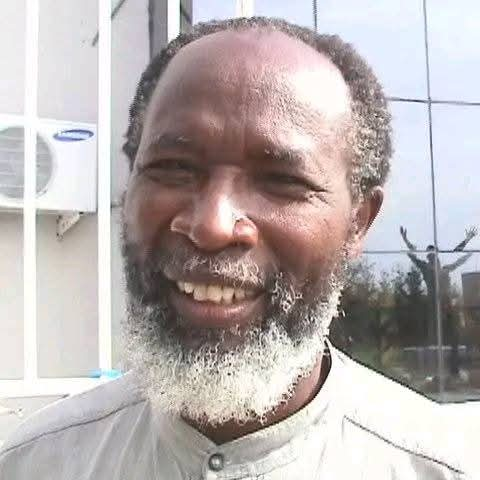Soapstone dealers in Kisii want a statue erected in honor of the late veteran Sculptor, Elkanah Ongesa, 80, who died last week.
They described Ongesa as a legend who put stone sculpture in the global map and thus the need to recognize him and his works.
“Ong’esa was a hero who marketed our country through gigantic sculptures dotted in cities in Europe and the USA. He was an icon,” said Daniel Apepo, group leader.
Onge’sa died of cancer at the Kisii Teaching and Referral Hospital, family sources told journalists when he passed on Friday November 29.
Apepo said they have already asked the national and county governments to erect a statue in his honor akin to that of freedom fighter Dedan Kimathi.
He also asked the County to name a road in his memory and for posterity.
The dealers separately protested exploitation of the mineral by suspected foreigners.
The exploitation has grown worse in the past two years causing concern of possible depletion of the precious stone.
They especially fingered China among rogue states hauling away the stone from the local quarries with abandon.
Apepo said transporting soapstone as raw materials out of the country defeats the purpose of efforts by the government to invest in value addition ventures.
“We want to know if the government and its security agencies, is aware of this matter and if it is aware what is it doing to manage the problem?” posed Apepo, also former Tabaka Ward Representative.
Without proper regulations on the mining the mineral, the residents stand to lose big,he observed.
“Potentially what is before our people is poverty unless something is done . We want a good regime that spells out on how we should benefit as a people,” said Apepo.
He thus asked the government to prevail upon the traders, especially from China as a measure to contain plunder off soapstone.
Instead, he asked for industries to be set at the quarries to help in value addition of the products before being sold to foreigners.
“The money we are borrowing from China, America and other countries will come if we do business with them and use it to repay our ballooning external debt,” Apepo stated.
The country, he added, stands to generate more revenue by selling processed soapstone products.
“If managed well, soapstone industry can leverage the economy of this country by earning foreign cash which can in turn help in the repayment of the foreign debts,” he stated.
Peter Ositu, another dealer said the setting up of a soapstone factory in the stone-rich area of South Mugirango was long overdue.
He said middle men were exploiting small scale carvers, noting once the factory is constructed, jobs will be created for residents to improve their lives.
Email your news TIPS to Editor@kahawatungu.com or WhatsApp +254707482874
